By Ross Elliott from The Pulse:
There’s a great line from the comedy show Kath & Kim, where the very suburban Kim expresses her desire to be like affluent city people. “I want to be effluent Mum,” she says. “You ARE effluent, Kim,” replies the equally suburban Kath.
The new political geography of affluent inner urban residents viewing life differently (and voting differently) to suburban and regional voters was proven again in the recent Australian Federal Election of 2025. The geographic pattern has previously been obvious in booth-by-booth results for recent State and Local Government elections, and the same happened for the Federal poll.
Inner city areas of our major urban areas are two things at the same time: they are much wealthier than suburban city dwellers, and more inclined to vote for far left/Green causes. The concentration of affluence in inner cities has been underway for many years, as inner urban areas were gentrified. Whether it is Sydney’s Balmain, Melbourne’s Richmond, or Brisbane’s New Farm, once working class/industrial areas are now home to the wealthiest people, living in the most expensive real estate, enjoying the highest levels of urban amenity and living the highest standards of living. They’re increasingly oblivious to the lives and issues of their fellow Australians.
This graph shows how it looks for Brisbane’s New Farm and West End, compared to middle and outer suburban areas. The same story is repeated across other cities in the country.
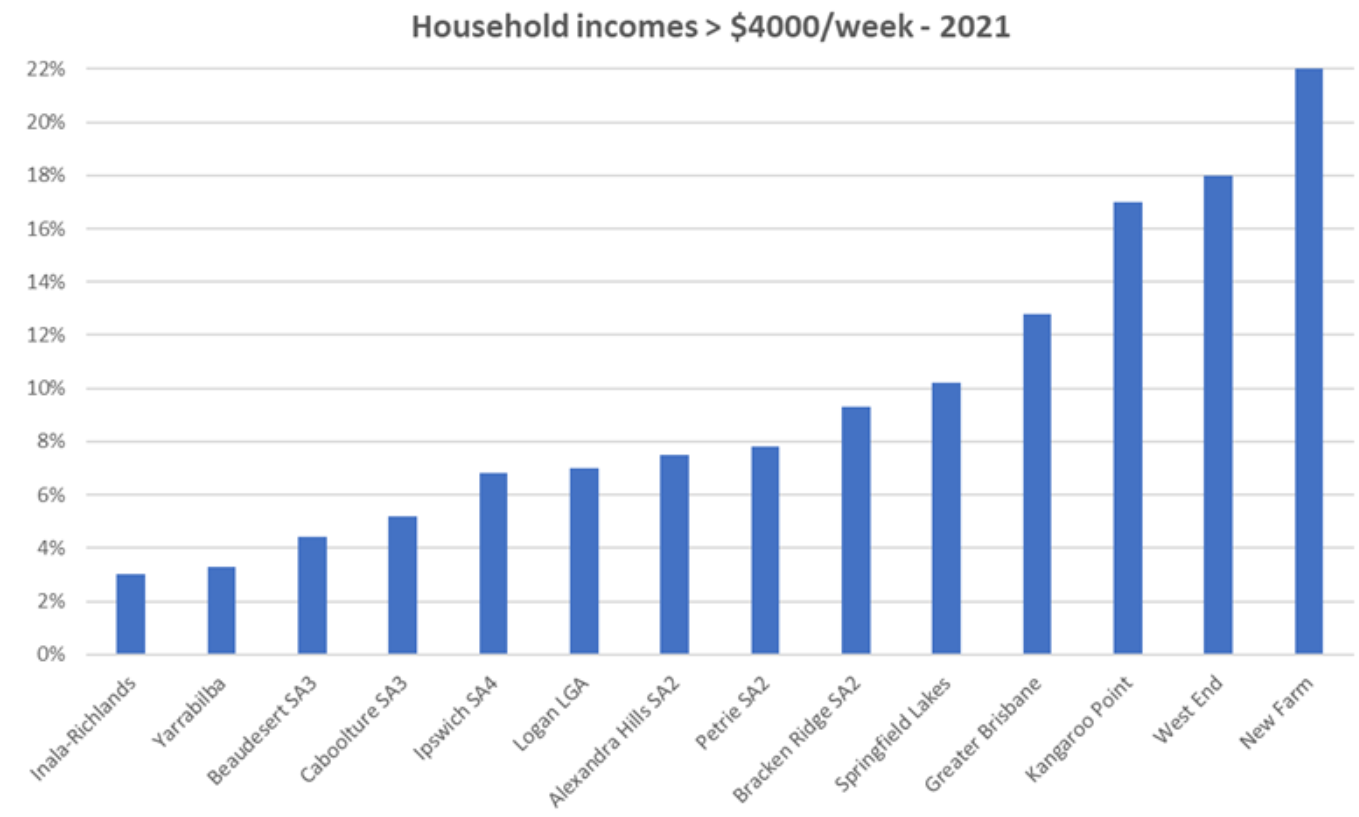
This level of income disparity also explains why voters in these areas view life differently to the suburbs.
Worried about waiting lists for health care? Nope, they have the highest levels of private health cover.
Worried about school class sizes or education generally? Nope, their kids attend the best private schools.
Worried about the cost of groceries? Nope, they shop at Harris Farm markets in trendy areas.
Worried about the cost of fuel? Nope, they probably have a taxpayer subsidised Tesla (soon to be traded in protest at Elon Musk’s MAGA conversion).
Worried about crime and personal safety? Not really, they have private security or live in impenetrable apartments.
Worried about being told you have to return to the office and can no longer work from home? Not really, the office for them is very close to home, plus they probably have managerial positions.
Worried about immigration, housing shortages and the housing affordability issue? Not really, they can afford to live in high end areas and will outbid others if that’s what it takes.
Worried about the cost of electricity? No, they can afford it – but are more worried about carbon emissions and climate change – so the very high cost of energy transition is worth it.
It’s the irony of modern politics though that these affluent inner-city residents are also the ones most likely to vote for leftist/Green causes—many of which are anathema to their own interests. There would not be too many suburban superannuation accounts with over $3 million that will be subject to an unrealised gains tax, for example.
The political reality is that the suburbs are different—they think differently and what appeals to the ‘big end of town’ interests associated with the inner-city set will not appeal to the suburbs.
When Peter Dutton suggested Federal Government public servants must return to the office 5 days a week, he was talking like an entitled and clueless CBD building owner. He might have had privileged Canberra bureaucrats in mind, but the message had massive collateral damage in suburbia where congestion, commutes, school pick ups and drop offs and the cost of living are seeing quality of life go backwards. It did not go down well, especially with women.
Political parties and their leadership invariably gravitate toward the ‘big end of’ town’—with major corporates, institutions, universities, media organisations and others keen to associate with them and to press their arguments over fine meals in luxury boardrooms. But this could also be deadly for political leaders, whose time may in future be better spent in a suburban nail salon, coffee shop or gym where they will hear very different opinions on almost every topic.
So detached have the views of the inner city set drifted from mainstream suburbia, that you wonder if a political party could actually grow on the basis of being the antithesis of the inner city zeitgeist. Like George Costanza in Seinfeld, just do the opposite?
The maps below show Federal Election primary vote results by booth, based on Electoral Commission data, and reported by The Sydney Morning Herald. The red dots are where Labor polled the most primary votes, the green are for greens, blue for Liberals, and grey for Independents (left leaning Teals in Sydney). The colours show the party with the largest primary vote – they do not take into account preferences or seat wins/losses.
I am just showing Brisbane, Sydney and Melbourne – which combined account for two thirds of the Australian population. If you can’t win here, you can’t win.
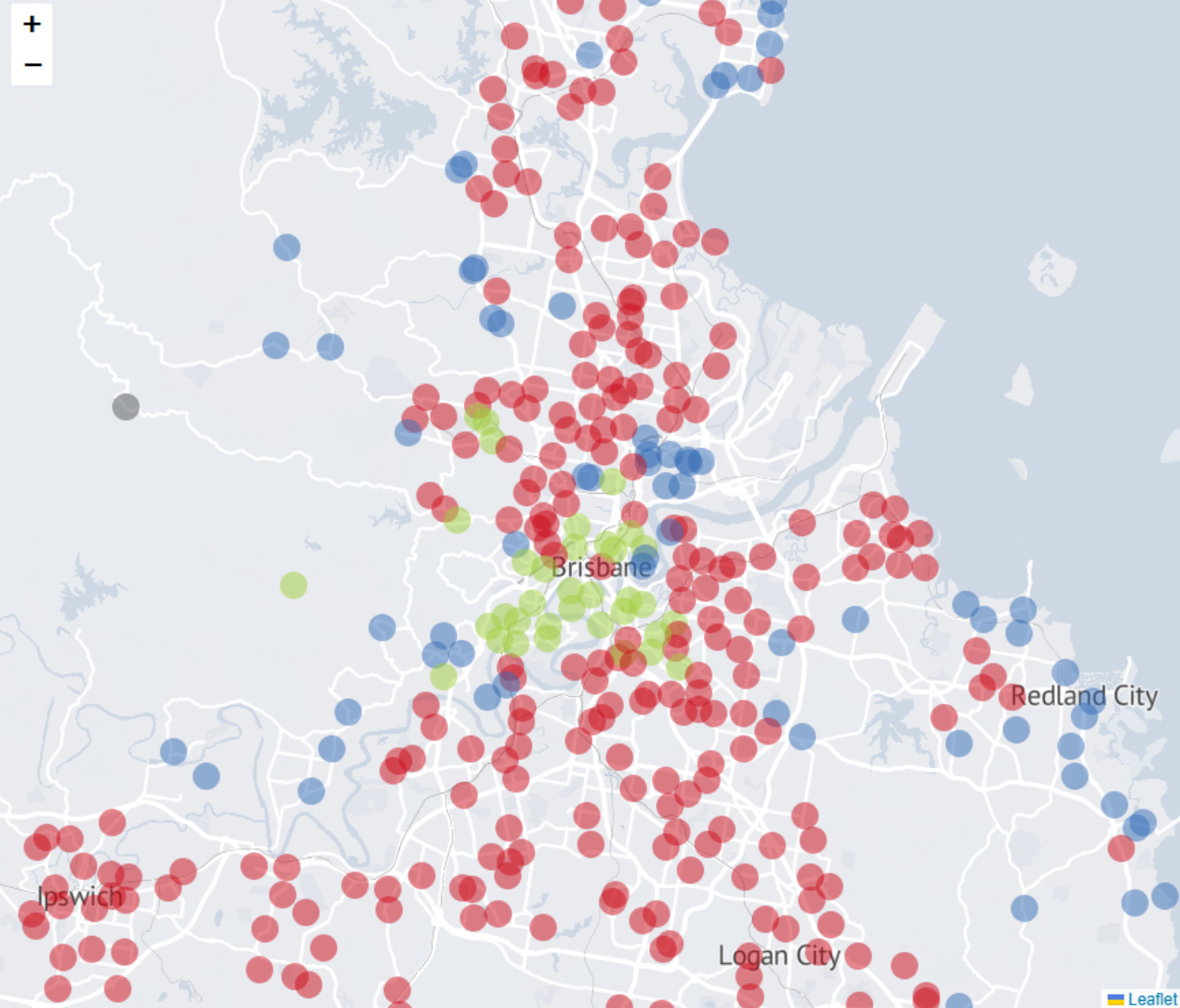
(Above) The clustering of green votes in inner city booths of Brisbane closely aligns with the highest income areas of the city. Labor dominated across most suburbs.
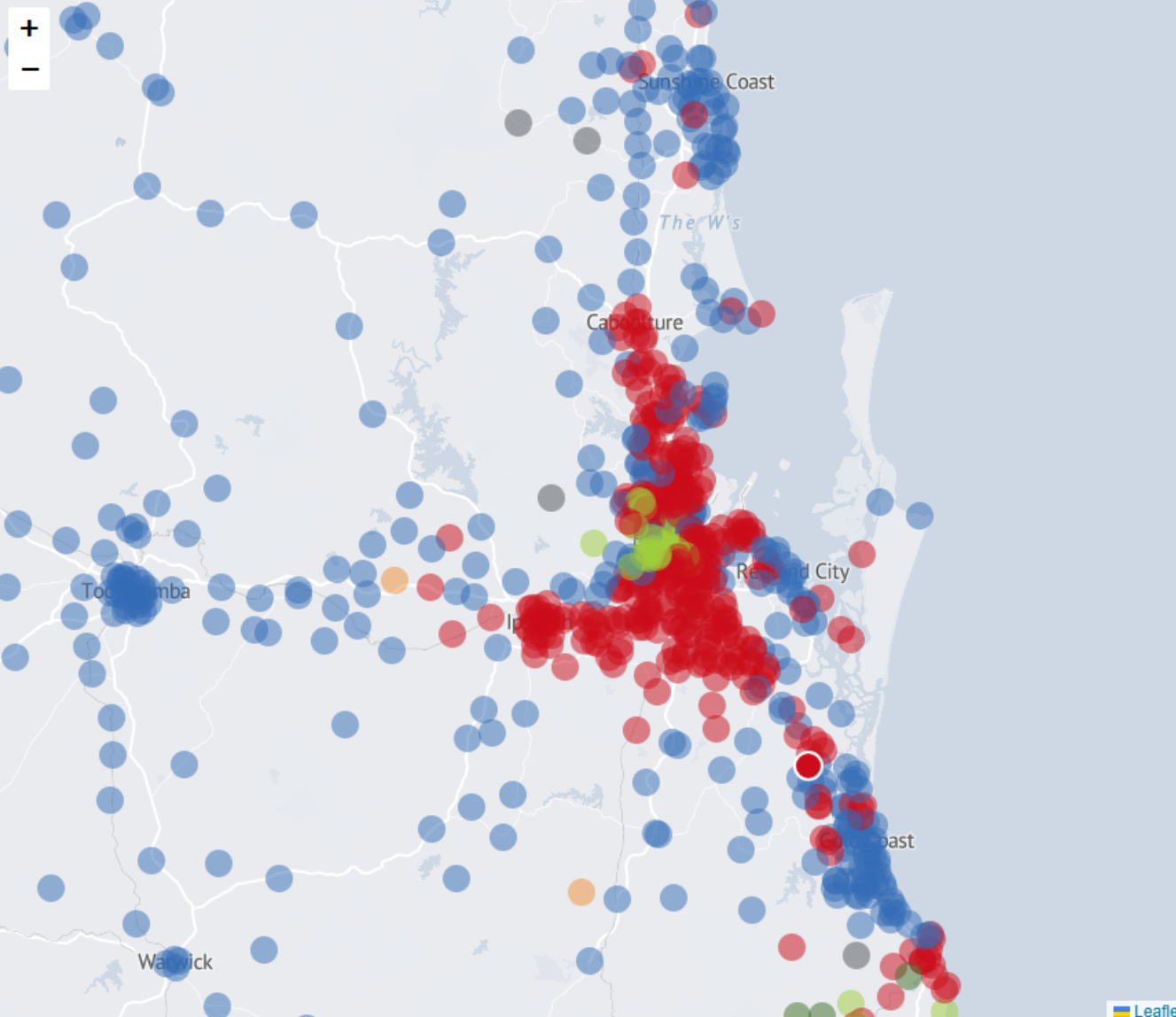
(Above) A wider view of South East Queensland shows the greens strength is confined to inner Brisbane, and does not extend to the Gold or Sunshine Coasts. Just south of here however is Northern NSW – a very strong green voting area (and a very wealthy one also). Liberals won the primary vote counts in Gold and Sunshine Coasts which are arguably more likely to house retirees or working boomers. This map covers a population of around 4 million – 15% of the entire country.
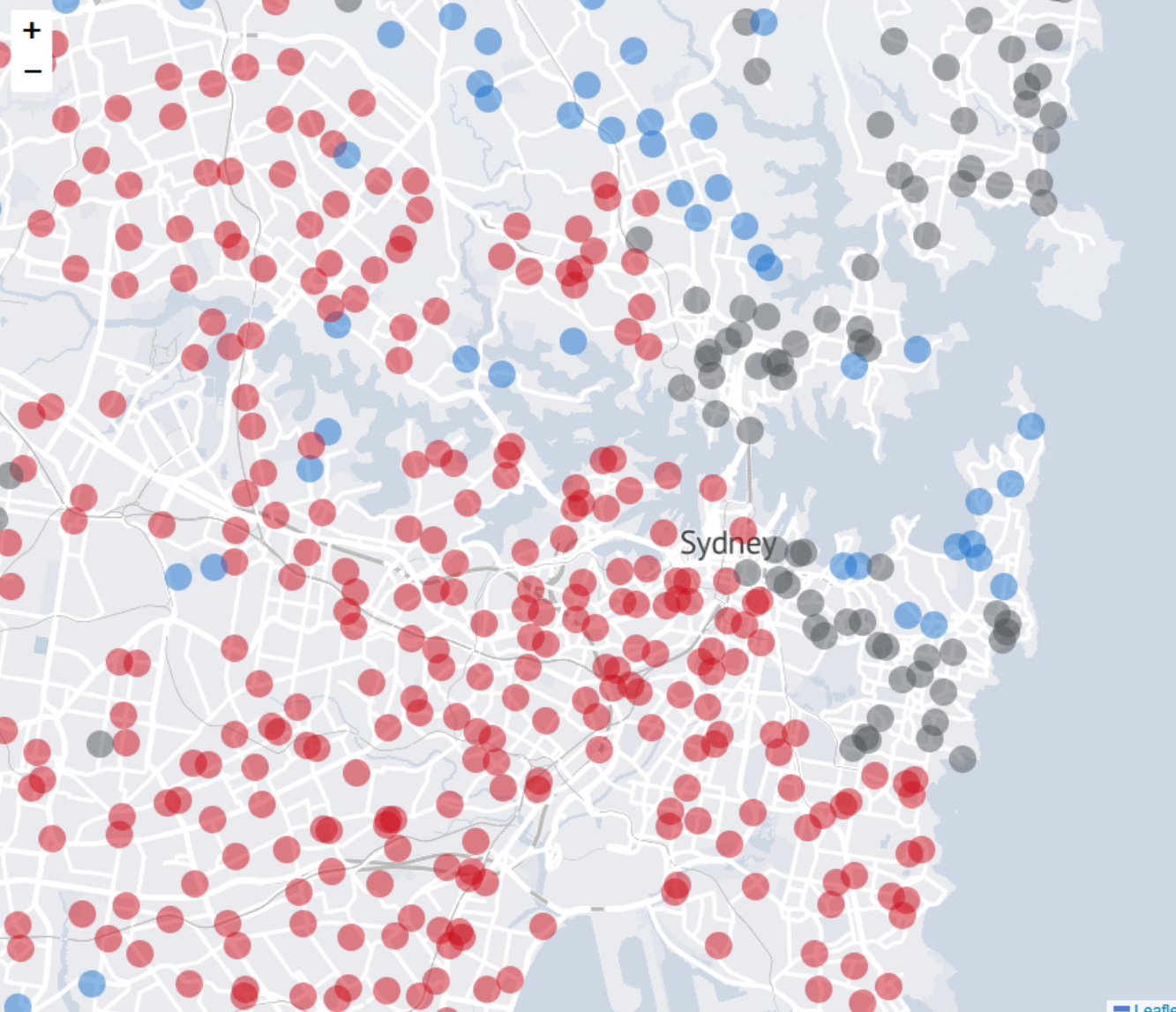
(Above) In Sydney, the independent/Teals votes are strongest in the wealthiest inner-city areas around the harbour. Labor did well everywhere else.
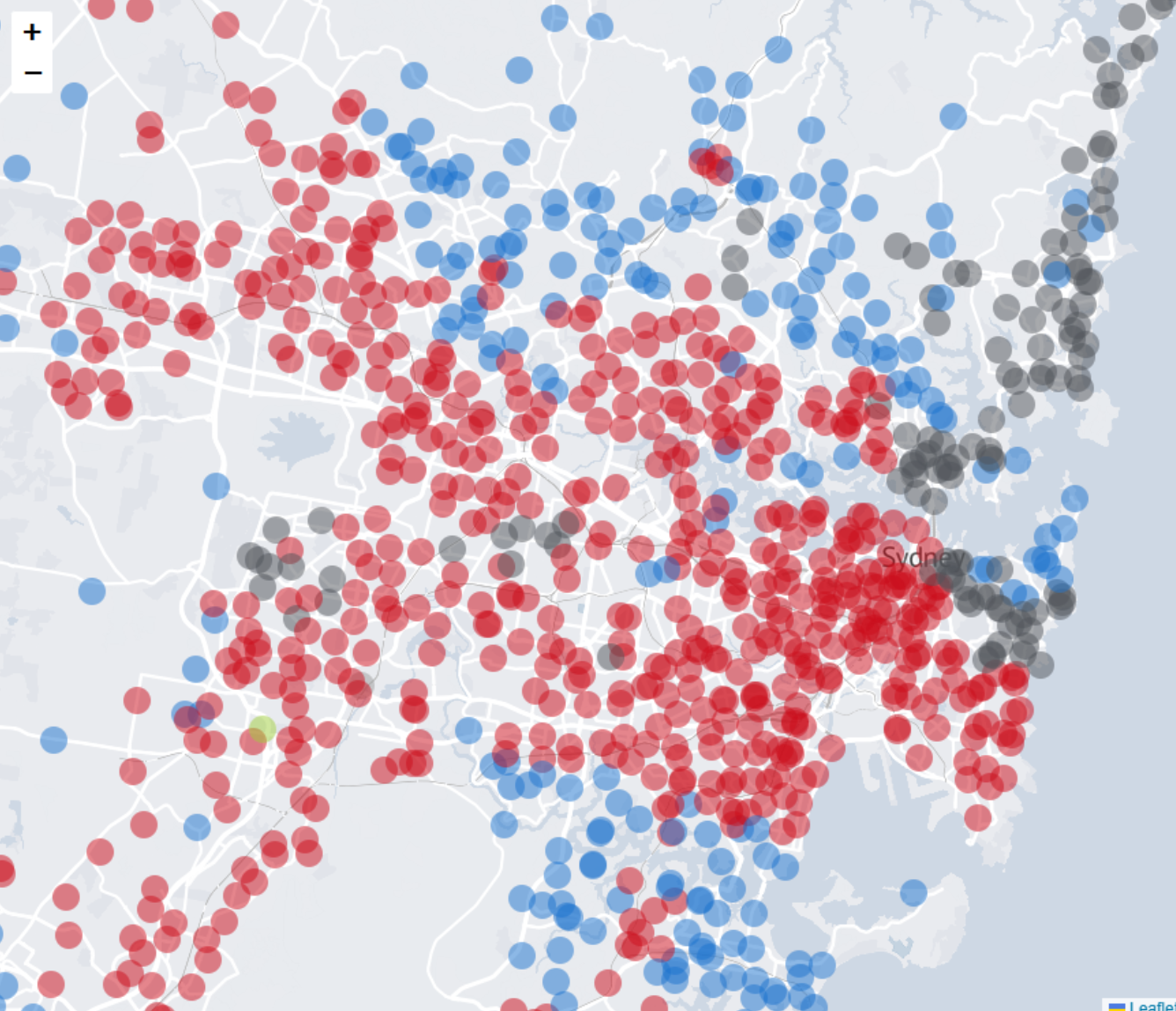
(Above) A wider view of Sydney, where Labor dominated the suburbs. This map covers roughly 5 million people – or around 20% (one in five) of all people in Australia.
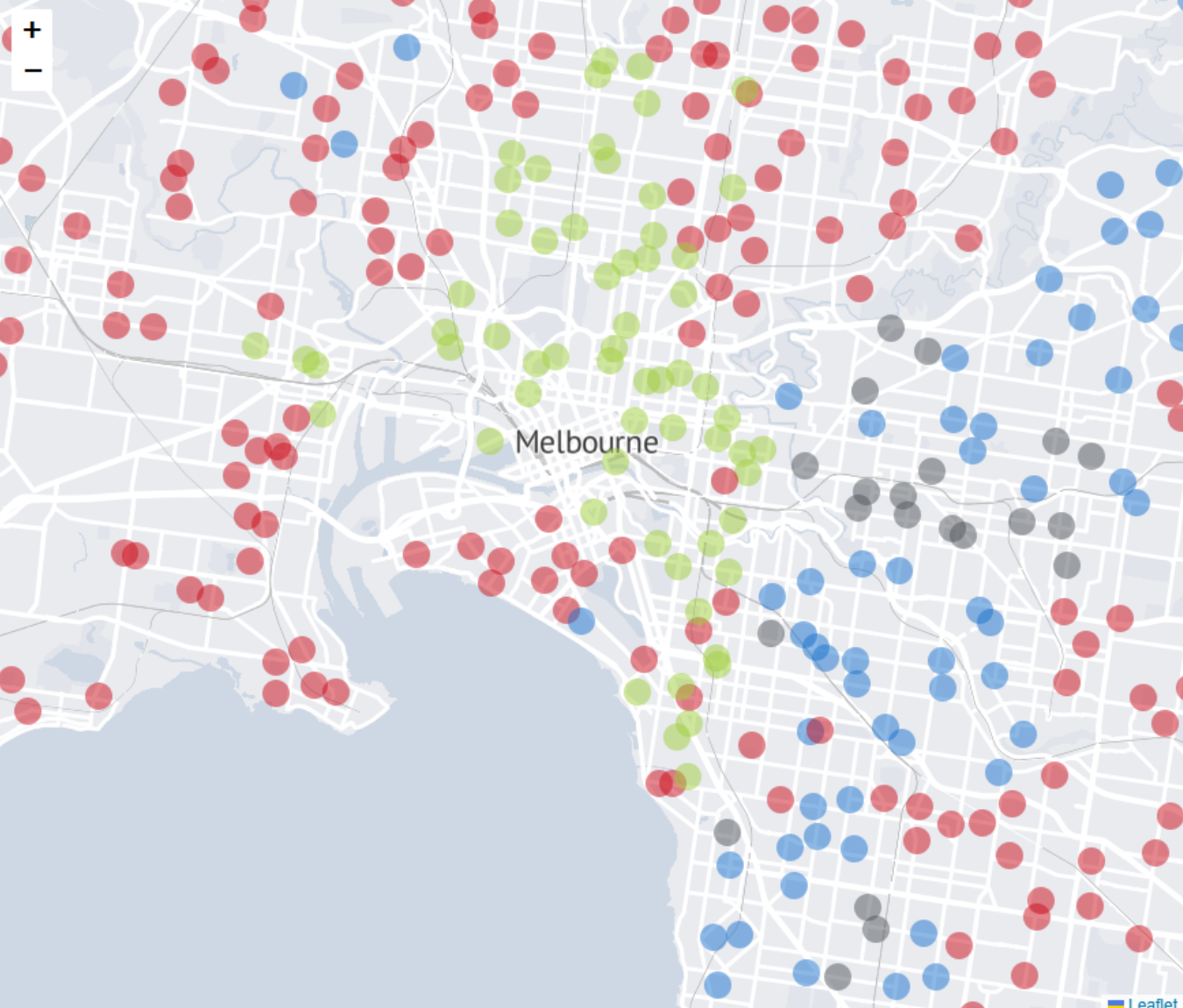
(Above) Inner city Melbourne is another Greens stronghold, where the greens vote also closely follows the geography of urban wealth.
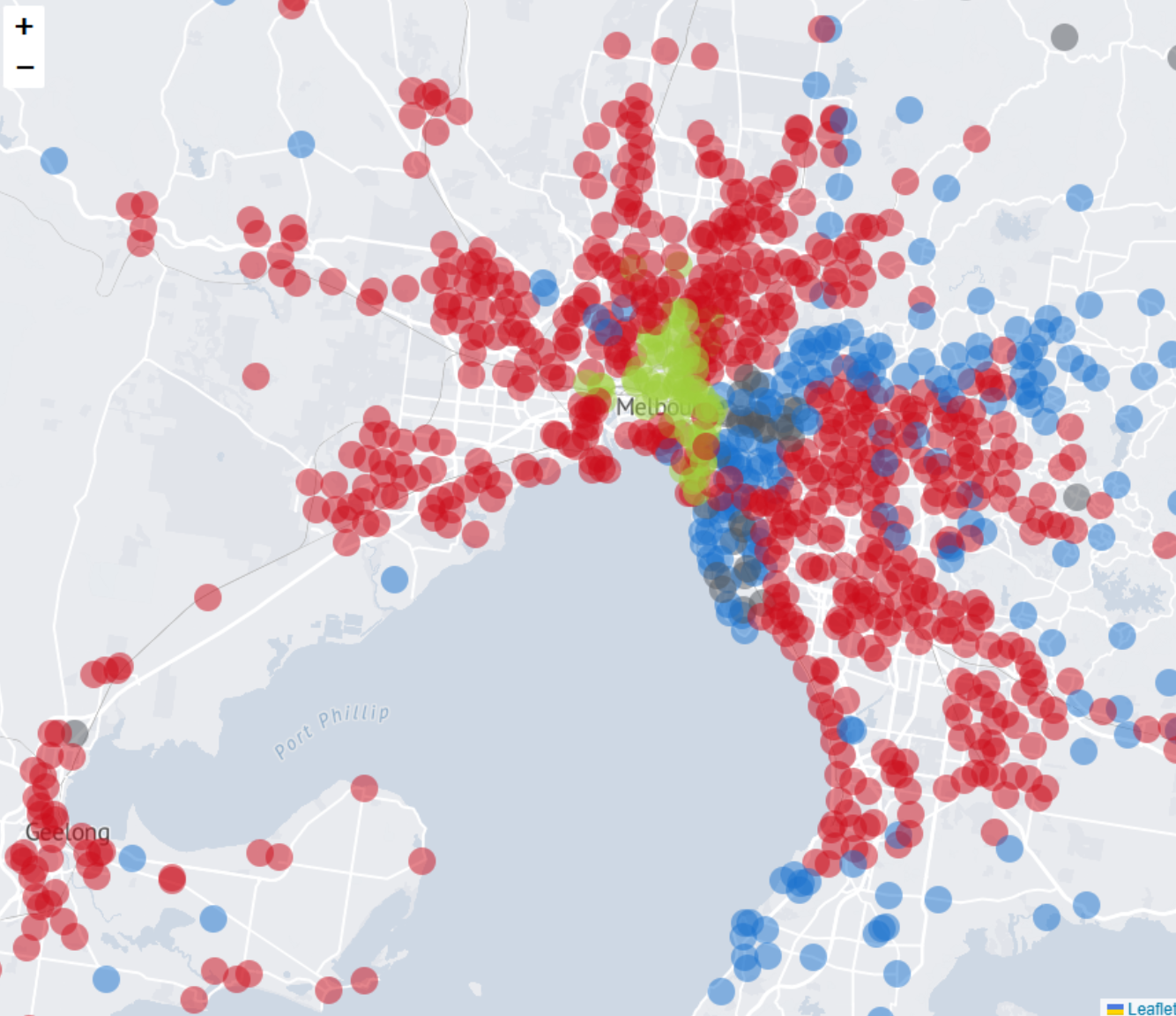
(Above) Greens in the centre city, and Labor in the suburbs. The liberal vote across suburban Melbourne was nowhere near enough to get it over the line. More than one in five Australians live in the area shown by this map.

